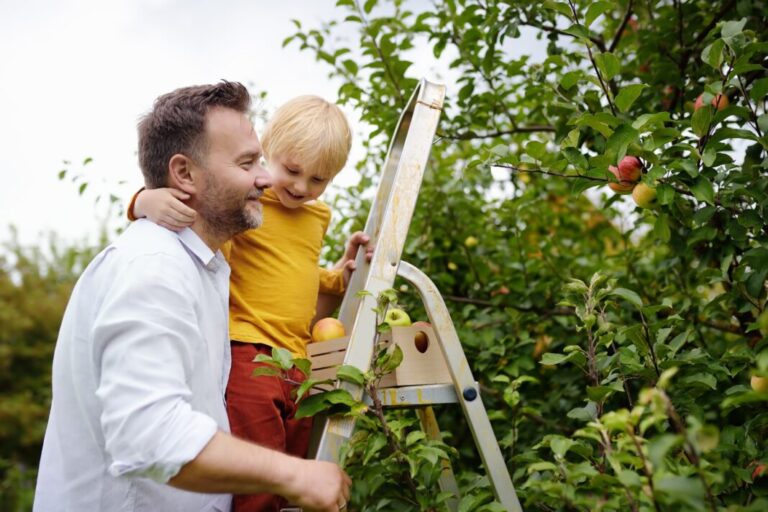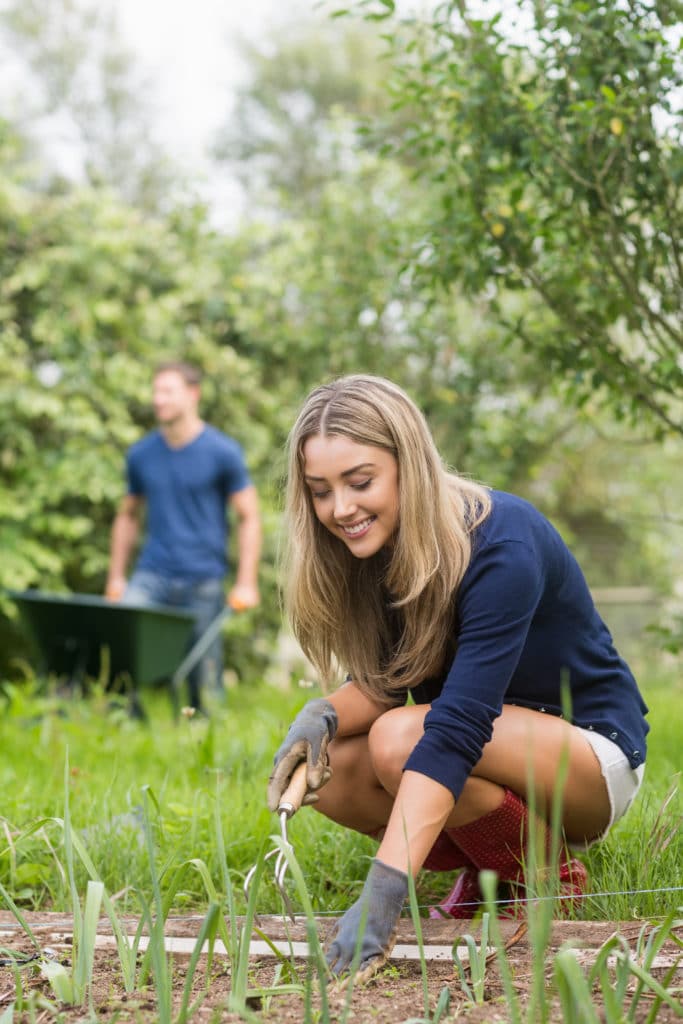
As we slip into the autumn, one thing is absolutely guaranteed; our gardens will need sorting out as we move through the season.
Experts are encouraging us to get gardening in autumn, as a new poll shows two thirds do not think it is an important season for planting.
The Royal Horticultural Society (RHS) is trying to encourage people, including new gardeners who have taken up the hobby during lockdown, to plant now to save water and money.
A YouGov survey of more than 2,100 adults for the RHS found just 8% thought autumn was the most important gardening season, compared to 68% who thought spring was the most crucial.
Asked if they thought autumn was an important season for gardening, two thirds (65%) disagreed or said they did not know.
61% of those surveyed said they didn’t know that tulip and daffodil bulbs should be planted in the autumn.
We see spring as a key season for gardening, but the RHS said autumn is arguably the most important, providing good conditions for getting new plants into the ground.
The soil is moist and warm, and not yet as soggy as it will be in the winter which makes it easy to plant and gives plants more time to grow new roots and be less vulnerable to dry summer periods.
It is a particularly good season for planting evergreens and trees.
Putting plants in autumn means people need to water less, and planting bulbs can be an inexpensive way of creating a display next year.
Sue Biggs is the RHS Director General, she told us…….
“Helping people to garden is core to the RHS’s being, especially for the environment and their health, happiness and wellbeing.
With the recent growth in gardening, many don’t know that autumn is arguably the most important gardening season, which is something we’re committed to changing by promoting and sharing the benefits of gardening now.”
“Water is a critical issue and planting evergreens, trees and many perennials over autumn usually means that we can water a lot less, with cooler climates and higher levels of rain.
We are seeing more dry and hot spring and summer months, when people can use a lot of water to keep newly planted plants alive.”
The RHS also has other tips for autumn gardening jobs, including composting fallen leaves, instead of putting them in the green waste, to improve the soil, and lifting and dividing perennials which is easier to do than in spring.
Now is a really good time to pick up a garden bargain. Buying garden goods in autumn can make sense with end of season discounts. The society is urging us to buy goods now to avoid potential price rises in the face of Brexit and Covid-19.
The RHS is launched a “grow at home this autumn” campaign, kicking it off with a bulb themed week, with ideas and ways to grow favourite bulbs such as in containers and to add spring colour to borders.
Just over half of UK adults who garden or grow plants outside (54%) deal with garden waste in the autumn by putting in in their council green waste bin, followed by 30% who will compost it, and one in ten who will take it all to the green waste tip.
Of those who have fallen leaves to deal with, just 8% said they used them to make leafmould, however 29% do add their leaf waste to their compost bin. Again the Council Green Waste Bin was the most popular way to get rid of leaves with some 43% using this method.
Chief Horticulturist at the RHS is Guy Barter, he told us…..
“Leaves often vex gardeners so no wonder two out of five consign them to the green waste bin, but leaves make the finest soil improver as leafmould. Making leafmould helps the environment by eliminating the cost and carbon emissions associated with green waste collection. Equally beneficial is raking leaves into heaps under shrubs and trees – they rot away by July and won’t promote slug damage or smother lawns and plants around woody plants.”
“Garden compost makes brilliant soil improver, second only to leaf mould, and it is free. Despite this more than half of people despatch garden waste to the municipal waste, either taking it to the tip or using green bins. There is a lot of off-putting myth around composting, but it is the simplest process and with a pair of smart rat resistant bins it need not take up much space nor cause smells or flies, and even if it contains a few stems and twigs, it will do your garden much good.”
The RHS has plenty of advice videos, question and answer sessions and will be accessible to all via RHS social media @TheRHS on Twitter, Instagram and Facebook or you can go HERE.
Here in South Wales, lockdown was a great opportunity to take even better care of our plants. It seems a lot of us used that time to get out, have some exercise and make our own gardens look the best they’ve been for a while. Experts are also saying that being in the garden is a great way to shift that lockdown weight too. Wouldn’t it be great if you went from being a couch potatoes into a real potato grower!
So, what we can we actually do in our gardens right now? It is the perfect time to get out and do some weeding. Tackle weeds head, remember to try and remove them before they set seed.
Don’t be put off if weeds take over areas in the garden from time to time. Certain weeds will flourish depending on the weather and soil conditions and you can tackle these weeds in different ways based on how they grow.
The RHS have some great advice on how to tackle all types of weeds, right here. WEEDS
At this time of year, the lawn is still actively growing and requires feeding, moss-killing, weeding and regular mowing.
All lawns need feeding in order to maintain vigour. When feeding, look out for signs of pest or disease and apply moss killer if required. Regular maintenance is the best way to approach a lawn, and may avoid the need for renovation later on.
Over winter, the lawn does not grow much, but with warmth still in the air, our grass is still going to need cutting. For more advice and tips from the RHS, go here. LAWNS

Established hedges require trimming to keep them dense and compact. Formal hedges require more frequent trimming than informal hedges.
New hedges require formative pruning for their first couple of years after planting. Formative pruning is usually carried out in winter or early spring.
After this, maintenance trimming is carried out, usually once a year for informal hedges and twice a year for formal hedges. Some formal hedges may need three cuts a year. Maintenance trimming is generally carried out between spring and summer. Timing of pruning should take into account the potential for nesting birds and be delayed until after the nesting season – considered to run from March to August – if there are any signs that indicate activity. For more detailed RHS Information, go here. TRIMMING
Here’s a few year-round pointers to help you along the way……
- Assess your exposure. If you are planting vegetables, keep in mind that most need at least eight hours of full sun every day. Flowers and other decorative plants have different sunlight needs, depending on their type.
- Designate your planting areas. You need a plan before you plant. A four-by-four-foot plot of land is a good start for vegetables. For flowers, decide where you’d like to dig the beds.
- Consider a fence. Fences are especially important if you are planting vegetables (although some flowering plants may be enticing to critters, too). Build it before you plant the garden, so rabbits never get a glimpse (or a taste) of that lettuce.
- Know your dirt. Most soil can be enriched with compost and be fine for planting. But you need to determine how much organic material and mulch you’ll have to add to make it fertile. A local gardening centre can help.
- Decide between tilling and creating a raised bed. If you don’t want to till and nourish the soil you’ve got, or if you have a bad back and would rather not be bending down so low to garden, you can build a raised planting bed with non-pressure-treated wood.
- Write down your preferences. For a vegetable garden, think about what you like to eat and what you generally buy (or can’t buy) at a local farmers’ market. With flowers, make a list of the colours you love and what you’d like to see in a vase on your kitchen table.
- Make a seasonal plan. Once you determine what will grow, what you like, and what time of year certain plants will flourish, you need to create a schedule. If your flowering plants all bloom in July and then die off, have some evergreen plants to keep the area looking lush. If your tomato plants take months to get big, plant smaller vegetables nearby that can make quick use of the space.
- Buy some basic tools. Have these essentials on hand before you begin: spade; garden fork; hose; hoe; hand weeder; and a basket for moving around mulch or soil.
Make sure you also create a month-by-month checklist to ensure you are doing the right jobs at the right time.
Your houseplants can always benefit from some autumn tlc.
There really hasn’t been a better time to get the kids out into the garden not only to play but also try their hand at a little work. It’s more than just a way to spend time having fun, it’s also a very healthy way to build up immunity and teach kids how wonderful nature is. Who knows, if you get them to plant and sow they may actually eat what they grow. Start with a bit of basil or parsley as it sprouts very quickly.

- Decorate pots with paint.
- Once the pots have dried out ask them to fill them in with soil.
- Press the soil down and water.
- Stick a pen or twig into the centre of each pot, down to a depth of just under an inch. Get them to put a couple seeds in each hole, and cover the hole shut again.
- Water a bit to keep the soil mix a little moist.











